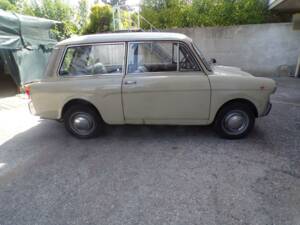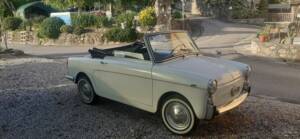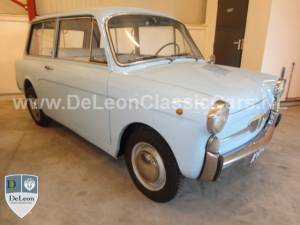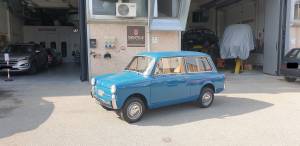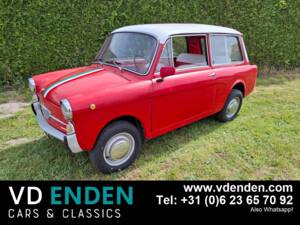- Car
- Autobianchi
- Autobianchi Bianchina (16 offers)
Autobianchi Bianchina classic cars for sale
The Autobianchi Bianchina is Italy’s answer to the premium city car of the late 1950s and 60s, combining Fiat 500 mechanicals with unique body styles and refined details. Whether as the rare Cabriolet, practical Berlina, expressive Panoramica or utilitarian Furgoncino, each model offers distinct engineering touches and exclusivity. Supplied with various engines and trim, the Bianchina remains an emblem of Italian ingenuity for enthusiasts and collectors.
Search results
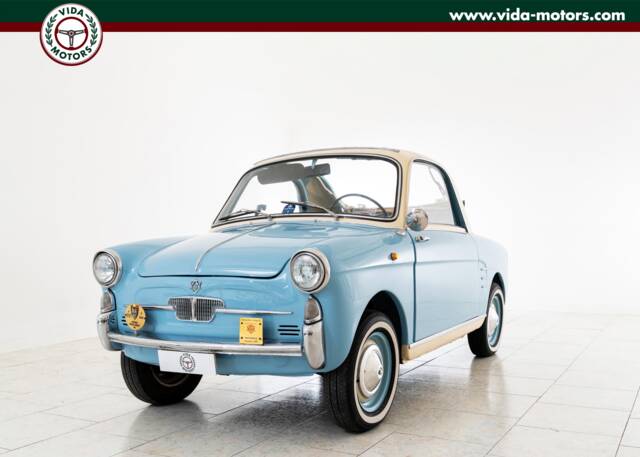
1959 | Autobianchi Bianchina Trasformabile
ASI GOLD PLATE * MATCHING NUMBERS * TRASFORMABILE


1969 | Autobianchi Bianchina Convertible
Autobianchi Bianchina Cabriolet | 1969 | Route 66 Auctions - For sale by auction. Estimate 10500 EUR
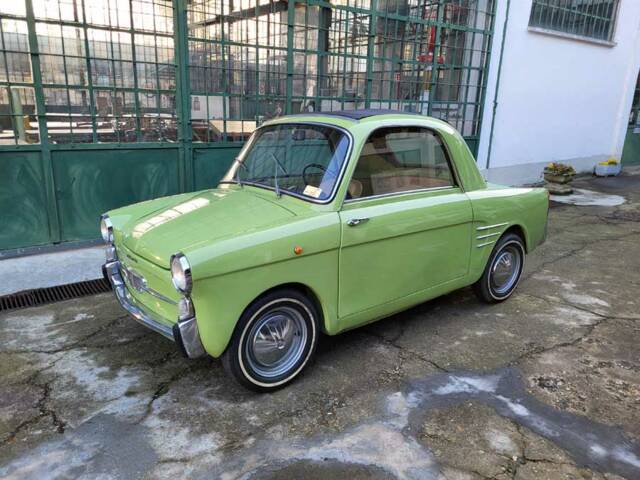
1961 | Autobianchi Bianchina Trasformabile
Autobianchi Bianchina Trasformabile – 1961
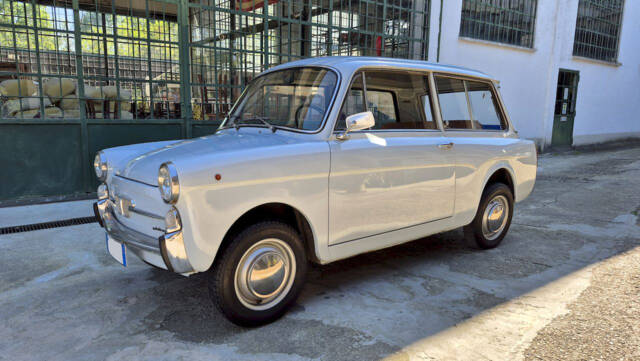
1969 | Autobianchi Bianchina Panoramica
Autobianchi Bianchina Panoramica – 1969

1967 | Autobianchi Bianchina
AUTOBIANCHI Bianchina Berlina / ASI / Targata TO / Originale

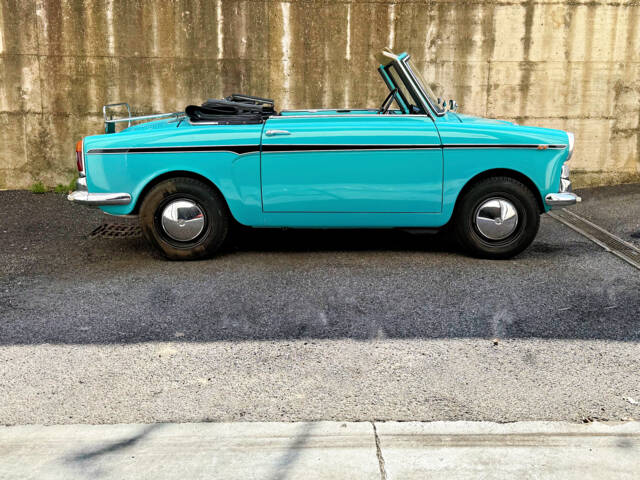
1961 | Autobianchi Bianchina Convertible
1961 II Serie

1968 | Autobianchi Bianchina Panoramica
AUTO ECCEZIONALE ORIGINALE CONSERVATA.

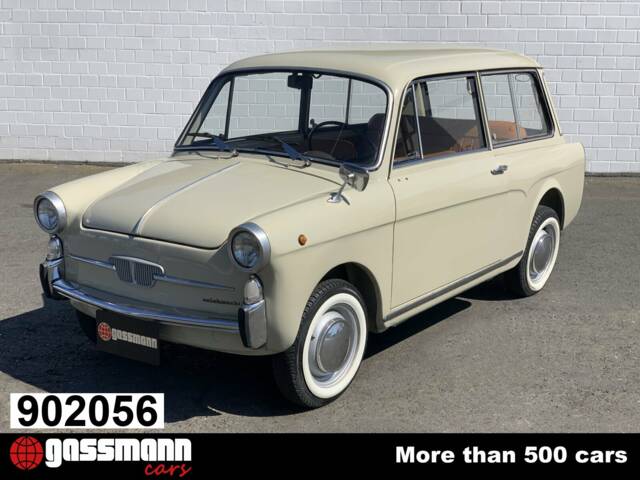
1967 | Autobianchi Bianchina Panoramica
120B Autobianchi Bianchina Panoramica
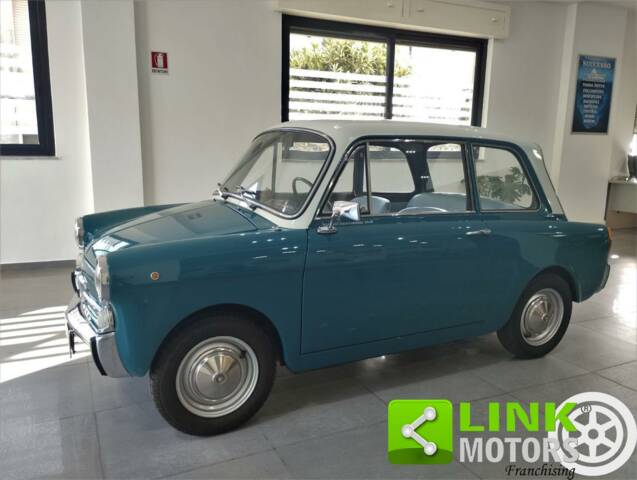
1968 | Autobianchi Bianchina
AUTOBIANCHI Bianchina BERLINA 110 FB
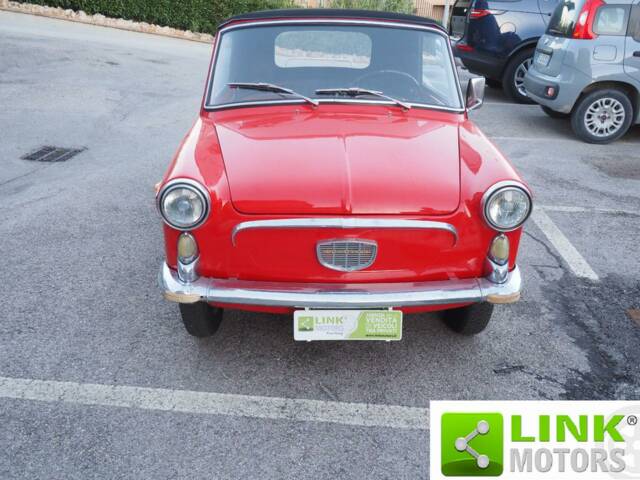
1966 | Autobianchi Bianchina Convertible
AUTOBIANCHI Bianchina PRENOTATA
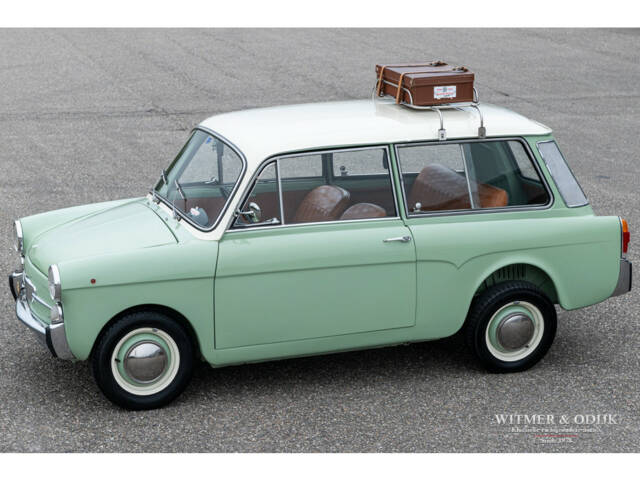
1969 | Autobianchi Bianchina Panoramica
Autobianchi Panoramica
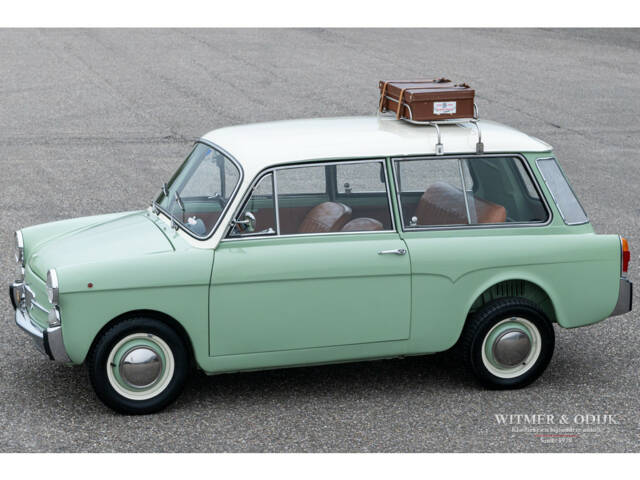
History of the Autobianchi Bianchina
Unveiled on September 16, 1957, at Milan’s Museum of Science and Technology, the Autobianchi Bianchina emerged from a new partnership between Fiat, Pirelli and Bianchi. Its arrival signalled a fresh take on compact cars — it capitalised on the proven mechanics of the Fiat 500 but paired them with original sheet metal, more refined finishes and a nod to higher aspirations. Initially, the Bianchina arrived as a two-seater coupé called ‘Trasformabile’, quickly making waves with its blend of utility and style. Over its run into the late 1960s, the Bianchina became synonymous with the Italian dolce vita, appealing equally to fashion-conscious urbanites and families wanting flair without compromising everyday usability.
Model History and Evolution
The Bianchina’s lineage is closely intertwined with the Fiat 500, which served as its technical foundation. Autobianchi began with the Trasformabile in 1957, followed by the Cabriolet and Panoramica estate in 1960, setting new standards for premium minicars. The spacious Berlina saloon replaced the original coupé by 1962, with further revisions and limited-run models expanding the offering. The last major update came in 1965, slightly refreshing styling and marginally boosting engine output. Production of the original series ceased around 1970 after approximately 275,000 built. From 1970 to 1977, the Bianchina name lived on in the Giardiniera estate and van, which retained the rear-mounted engine and unique platform floor. The Autobianchi A112 succeeded the model, but the Bianchina’s shapes and concepts have become fixtures in automotive memory.
Highlights and Distinctive Features
The Bianchina stood out for its sophisticated detailing, rare body styles, and a spectrum of usable configurations. Notable highlights include suicide doors on the early Trasformabile, rare Furgoncino vans with folding roofs, crisp chrome accents, and elegantly two-toned interiors. The Cabriolet, marketed as 'Eden Roc' in France, numbers among the smallest convertibles ever factory-built. Technical authenticity is a hallmark—most Bianchinas are found today with original papers and Italian registration, and some qualify for Automotoclub Storico Italiano (ASI) certification.
Technical Data
Special Editions and Collector Models
Several Bianchina editions stand out: the Trasformabile Special, featuring a 21 PS Fiat 500 Sport engine and distinctive two-tone paint, the limited Berlina DBA/1 Special, and the refined ‘Eden Roc’ Cabriolet sold in France. The Panoramica F variant is notable for its production numbers and practical appeal, while the rare Furgoncino Tetto Apribile (van with folding roof) is highly sought after by advanced collectors. Most of these models are difficult to source with original fittings and accessories.
Weak Spots and Common Issues
As with many classic Italian city cars, Bianchinas require vigilance for rust, especially in sills, floor pans and wheel arches. Engine cooling must not be neglected; overheating due to blocked cooling shrouds or tired fan belts is common. Replacement parts, especially for rare trims, special wheels and original interiors, can be challenging to source. Door hinges and suicide doors (Trasformabile) may need regular checking for proper alignment and wear.
Engine and Performance, Transmission and Handling
Engineered around the Fiat 500 platform, Bianchinas offer reliable if modest propulsion. Early versions (479 cc, 15 PS) top out near 90 km/h, while later 499 cc engines push performance to 18–21 PS and up to 105 km/h (notably in the Cabriolet and Specials). Gearshifts are column-mounted and familiar to 500 enthusiasts. Most variants retain drum brakes and a minimalist, engaging city car chassis, delivering quick directional changes and minimal body roll, perfect for dense urban driving or relaxed touring. Fuel consumption typically stays around 5 litres/100 km. Especially sought after are Trasformabile Specials (21 PS), Cabriolets (including Eden Roc), and high-production Panoramica F estates. The four-seater Berlina F offers practicality and a larger interior with classic small car charm.
Interior, Comfort, Exterior and Design
Luigi Rapi’s design gave the Bianchina an instantly recognisable silhouette: tapering tailfins, pronounced eyebrows above the headlights and a playful, upswept beltline. Interiors often feature two-tone vinyl or cloth, with red, beige and white the most typical. Accessories such as original Borrani wire wheels, specific Italian colour codes, and suicide doors help distinguish trims. Dashboard layouts are stylish yet basic, with signature switches and round speedometers. Cabriolet models benefit from complete absence of B-pillars for a true open-top feel.
Other Notable Features
In period France, Autobianchi rebranded the Bianchina as Lutèce (saloon), Texane (estate), and Eden Roc (Cabriolet). In the US, Fiat badges often replaced Autobianchi logos. Pop culture appearances include film roles— notably as Inspector Clouseau's transport in ‘The Pink Panther’. Recognition by the Registro Storico Italiano Bianchina establishes provenance for top-standard restorers and collectors.
Summary
The Autobianchi Bianchina delivers a unique flavour of compact Italian motoring from the postwar boom, striking a balance between style, usability and authentic period engineering. Multiple rare configurations, quality finishes, and lively engine options make it an outstanding choice for those seeking a classic city car with history and personality. Rarity and demand remain consistently high in enthusiast circles.

